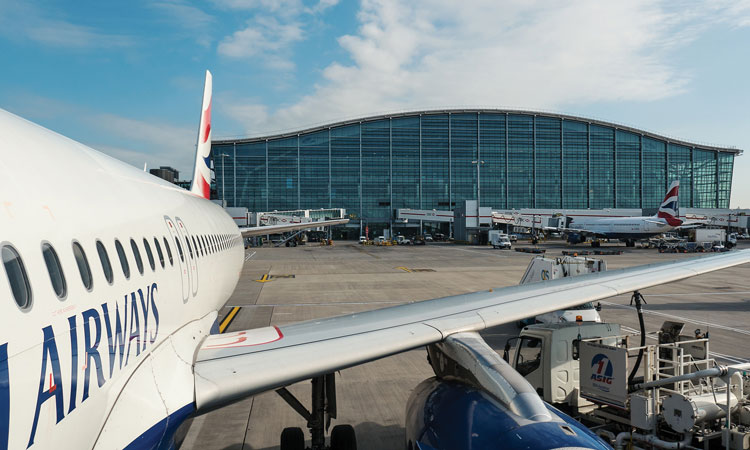Passenger experience at Heathrow: Putting the glamour back into flying
- Like
- Digg
- Del
- Tumblr
- VKontakte
- Buffer
- Love This
- Odnoklassniki
- Meneame
- Blogger
- Amazon
- Yahoo Mail
- Gmail
- AOL
- Newsvine
- HackerNews
- Evernote
- MySpace
- Mail.ru
- Viadeo
- Line
- Comments
- Yummly
- SMS
- Viber
- Telegram
- Subscribe
- Skype
- Facebook Messenger
- Kakao
- LiveJournal
- Yammer
- Edgar
- Fintel
- Mix
- Instapaper
- Copy Link
Posted: 28 September 2016 | Fiona Carleton | No comments yet
Today’s passengers want to see operational efficiency but not at the cost of their experience. In a bid to deliver the ‘best airport service in the world’, Heathrow Airport has undertaken a journey to discover what passengers actually want. Fiona Carleton, Director of Passenger Experience, provides an overview.


This year will see Heathrow Airport celebrate its 70th birthday. The airport has played an important role in millions of peoples’ lives and is part of the economic success of the UK.
Over the past 70 years more than 20 million flights have taken off and landed from Heathrow Airport – a mind-boggling two billion passenger journeys! But it’s not just about numbers; Heathrow is a global brand. For those outside of the UK the airport is a symbol of Great Britain and London. For the North American marketplace, Heathrow is the gateway to Europe and the world beyond. As a global hub, Heathrow connects continents, communities and families. And it is when you start to personalised the journeys that you begin to truly appreciate the role that an airport plays – not just for passengers, but for colleagues too.
To mark its 70th birthday, Heathrow has undertaken extensive research to gain a unique insight into the airport’s role at the heart of many life-changing journeys.
The challenge for aviation
The glamour of flying is still very much evident at Heathrow. However, there has never been a greater time of challenge for aviation to step up and face the challenges of complex process and geo-political events whilst maintaining the focus firmly on the passenger; to preserve and elevate their travel experiences.
And this is where the true challenge lies for Heathrow. Our vision is bold: ‘to deliver passengers the best airport service in the world’. As an airport, Heathrow has transitioned from developing infrastructure into operational efficiency and now on to truly understanding and delivering global-leading levels of passenger service.
From my personal experience as a passenger, it is evident that some airports focus entirely on operational efficiency. Lean and Six Sigma thinking have been so prevalent across airports – specifically but not restricted to aviation security process – and with good reason, given the succession of legislative and process change. These are of course globally proven approaches to process improvement, and why if it is effective enough to process a tin of beans would it not hold true for processing people? After all, it’s about maximising capacity, creating resilience, sweating the assets and driving throughputs, isn’t it?
Passenger flow
Of course that does matter. The foundation of any airport experience and therefore passenger expectation is that they can easily get to and through the airport and on to the aircraft (with bags) successfully. We may look at operational KPIs and congratulate ourselves on punctuality and baggage connect rates, but is that telling us the whole story? Isn’t it obvious that if we get the operation to run, the passengers will be happy? Ask your passengers and they will tell you – they do not like being processed, batched, held and queued; they most definitely do not want to feel like a tin of beans on a production line. What’s more they see it happening, they feel it happening, they want efficiency but not at any cost to their experience.
When pursuing excellence in customer service, just getting the job done will barely even register satisfaction. It is no different for us in aviation. As airports we operate in the realms of passenger expectation and emotion. Those expectations aren’t set across airport experiences (with most passengers being relatively infrequent travellers), but from people’s general life experiences. That’s where the bar is set and that’s where we’ve set our sights at Heathrow.
Offering great customer service
In order to learn about truly great customer service, we have sought to learn from both other global hubs and those organisations recognised as leaders in their respective sectors for outstanding service delivery, beyond aviation. Whilst the hospitality sector is perhaps an obvious one to consider, we are also learning from financial services, technology organisations and academia.
What distinguishes many leaders in the customer experience field, is a business model which targets a niche market; either in the product or service it offers or the demographic targeted by it. In this way, they can recruit in the image of the customer and offer highly personalised, targeted and relevant offers.
This is simply not the case for Heathrow. We expect to welcome over 75 million passengers in 2016 alone. Putting that into context, on our busiest day this year so far, more than a quarter of a million passengers passed through the airport. And overlaid with the volume is the diversity of the people using our services. Serving 180 destinations, we could literally see any nationality, any age and/or any language pass through our doors.
However, even if we could navigate that, we’d still only be part the way there. Airports tend to operate in line with airline business models and their passenger segmentation approach; so we then consider the passenger through the lens of class of travel. Then we must consider whether the traveller is part of a family group? Are they from the ageing population or a ‘millennial’? Do they need active support or do they want 100 per cent automation? All these questions still only take us so far.
Considering multiple ‘travel personas’
What really unlocks our ability to match service requirements to passenger need is in understanding their motivation to travel. But what complicates matters even further is that one individual can have multiple ‘travel personas’ – for example a long-haul business passenger may be travelling on a premium fare one week then fly out on a short-haul budget airline for a weekend away the following week, and then fly economy stateside with a family of five for a summer holiday.
For this type of passenger even personalised communications would likely pigeonhole them into one segment, regardless of how appropriate it is to their next journey. As proof of how hard this is to get right, even the most sophisticated online market places get it wrong; order fake blood for Halloween and builders wipes for DIY just once and you’ll find yourself repeatedly offered items associated with a B-rated horror movie producer, rather than a suburban family home!
So how is Heathrow Airport addressing this challenge?
Perhaps in slight contradiction of my earlier points, and in acknowledging that we can’t boil the ocean, we have started this process by segmenting key passenger groups and going further to create personas that genuinely bring individuals to life within the organisation. It is when we start engaging with individuals, empathising with their needs and wants, that we can create genuine engagement between our colleagues and the passengers that they serve.
Our key customer groups are illustrated via personas we have set about mapping every conceivable journey a passenger can make to, from and through Heathrow. And we don’t just look at the physical journeys (be they arriving, departing or connecting), we also recognise that passenger journeys also occur on the emotional and virtual/digital level too.
Creating this ‘as-is’ reality has been one of the most exhilarating projects undertaken. Led by colleagues and involving partner organisations across Heathrow, actual re-enactments to walk in passengers’ shoes has focused our minds, broken down silos and ignited a passion across the organisation to understand the passenger experience and play a role in transforming it.
It is with this mindset that Heathrow is considering key initiative and projects; such as the role of automation, self-service, common use and digital technologies. These aren’t oven-ready solutions but they may offer a response that allows us to address passenger needs.
In pursuit of efficiency and automation
In the pursuit of efficiency and automation, it would be easy also to lose the identity and uniqueness that air travel has historically inspired. I met with a Global President for Customer Experience in New York recently and it was chastening to hear him describe airports simply as a ‘utility’. He was not intending to be provocative; simply that’s what airports now mean to him. And that mindset is a real threat to a successful, thriving airport.
How do we evolve and safeguard the special glamour of flight, yet adapt to ever-changing needs?
We can’t expect our customers to necessarily know what they want us to do in the future so we have started to explore future mega-trends and are developing our hypotheses of what passengers will need Heathrow to be in the future; tracking trends to ensure we are ahead of the curve and truly passenger-centric.
As best depicted in the closing scenes of blockbuster Love Actually, Heathrow is a stage set for people’s own life dramas – from the warmest of welcomes to the most heart-breaking of goodbyes. Therefore, beyond the operational efficiency required to make this vast enterprise run efficiently and affordably, our mission is to recognise and connect with the individuals travelling through, making our role in their journey the most memorable that it can be.
Biography
Fiona Carleton is a highly experienced customer service leader who focuses on championing the alignment of organisations to deliver for customers. Central in the opening and operating Heathrow’s Terminal 2, Fiona’s current challenge is to develop the strategy enabling Heathrow to fulfil its ambition to deliver passengers the best airport service in the world.


















